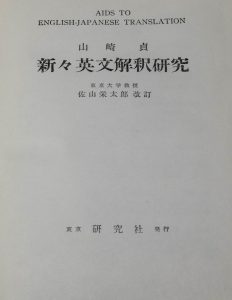The following essay is what I wrote as an assignment for a writing course at an English school AEON:
Topic: Festivals
Style: Casual
I would like to introduce a famous festival held during the so-called golden week in Shimonoseki city, my birthplace. The name of the festival is Senteisai (a festival for the passed emperor) held from May 2 to May 4. The purpose of the festival is to pacify the spirit of the emperor Antoku who died young in 1185.
In late 12th century Japan, two dominant samurai families, Genji and Heike fought each other trying to get the governance of Japan. The battle of Dannoura was the last one where Genji defeated Heike completely on the Kanmon channel. It was a naval battle where many ships of the both sides fought on a very narrow channel called Kanmon channel between Honshu and Kyushu. In the first stage of the battle, Heike had superiority, but because of the change of tide, Genji finally destroyed most ships of Heike. The emperor Antoku, who was a grandson of Kiyomori Taira of the Heikes and was just 6 years old at the battle, was getting on a ship with some female retainers. Most remaining samurai and retainers drowned themselves. The young emperor asked to a female retainer where they would go. She replied that they would go to the paradise and there was another metropolis at the bottom of the sea. Then, she brought him into the sea.
Some menials were drawn up from the sea and survived. Many of them were forced to do prostitution to make a living. Later they started to hold a festival to comfort the spirit of the late emperor. That was the start of Senteisai. The most spectacle attraction on the festival is a parade of beautifully attired geisha girls called “joro dochu”. (Joro is another name of geisha in Japanese.)
It is alleged and also believed that it surely rains on at least one day among the three. We call it the tears of Heike people.
Lafcadio Hearn, aka Yakumo Koizumi in Japan, wrote a story of Miminashi Hoichi (Hoichi the earless). Hoichi was blind and was a story teller of the battels between Genji and Heike, accompanied by the biwa, a Japanese lute. He was favored by some ghosts of Heike. Whenever he told the story to them, all the ghosts cried harshly at the scene of the death of the young emperor. A famous priest tried to save his life and wrote holy scripts of Buddhism on all parts of his body. But because the priest failed to write them on Hoichi’s ears, his ears were found and taken by the ghosts. He survived, but later he was called Miminashi Hoichi, Hoichi the earless.

